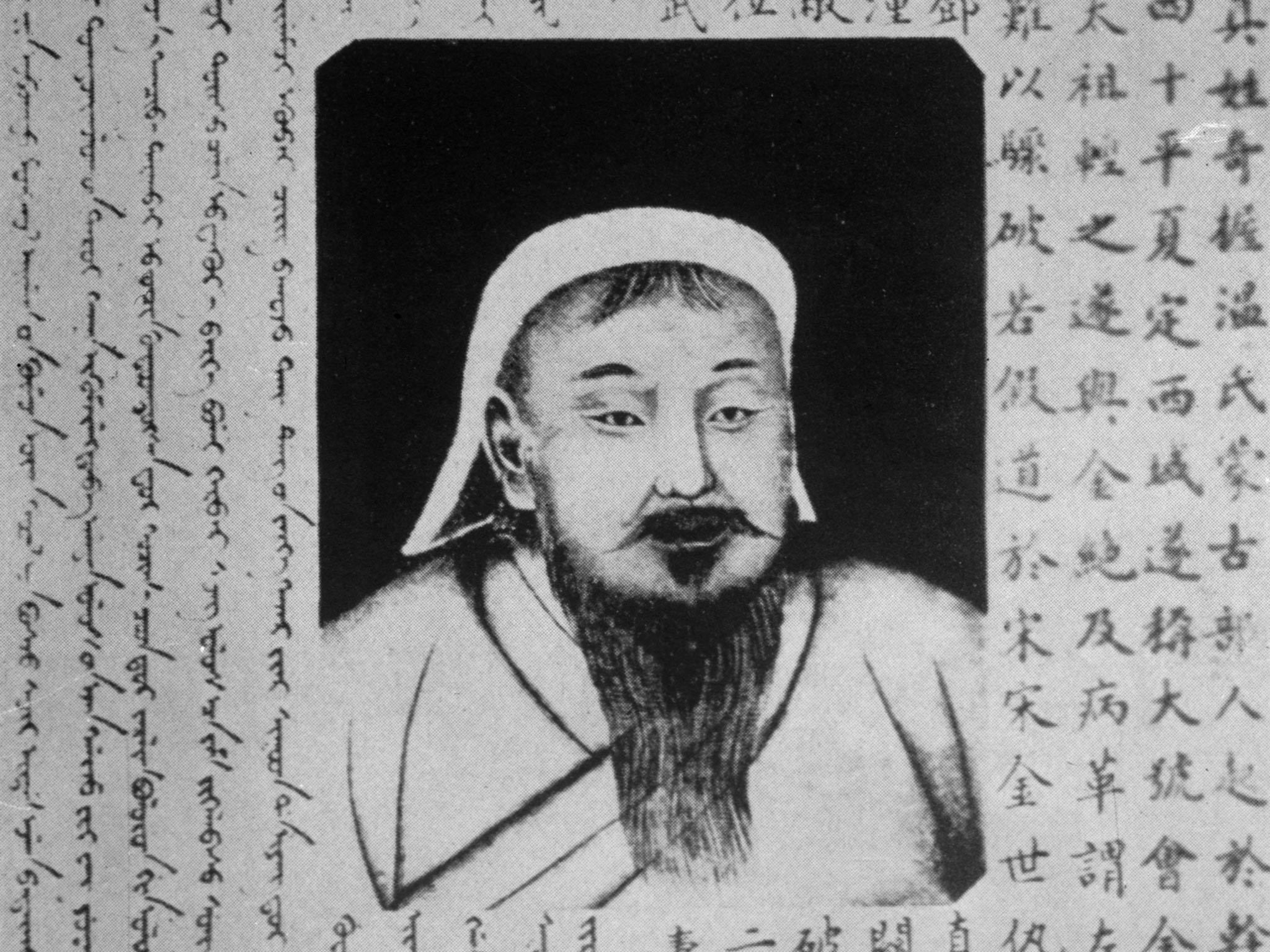A family affair: How genetic mixing has affected us all
From Mogul warriors to European traders on the Silk Road, a new map shows history’s great migrations have left a genetic mark on peoples across the world

Genghis Khan may have been the most famous ruler of what would become the largest empire the world has ever seen, but despite the Mongol realm collapsing long after his death scientists have now revealed the 13th-century warrior’s genetic legacy continues to this day.
The genetic histories of 95 different populations across the world – showing the likely impact of Khan’s transcontinental empire as well as European colonialism, the Arab slave trade and European traders on the Silk Road mixing with people in China – have been revealed for the first time. Displayed in an interactive map, the work identifies, dates and characterises genetic mixing between populations.
Research has already shown the Hazara people of Pakistan are partially descended from Mongol warriors, based on historical, linguistic and oral tradition. But a team from Oxford University and University College London has revealed clear evidence of Mongol DNA entering the population during 1306 – exactly 100 years after Genghis Khan was pronounced ruler of all Mongols.
Six other populations, from as far west as Turkey, showed similar evidence of genetic mixing with Mongols around the same time as soldiers had children with women from areas they conquered. The Uyghur people in China are estimated to have a 50 per cent proportion of ‘Mongol-like’ genetic mixture, Uzbheks a 39 per cent proportion. and Turkish eight per cent – showing a progressive west-ward decrease in Mongol ancestry.
Using what the authors have christened their “Globetrotter” technique, the map allows people to select a population revealing “past admixture events”. This reveals the histories of the genetic mixing that created them, between populations across Europe, Africa, Asia and South America spanning the past four millennia.
Dr Garrett Hellenthal, of the UCL Genetics Institute the study’s lead author, said the team was able to pinpoint the year or time frame when genetic mixing took place using genetic recombination – the biological process in which two DNA molecules exchange genetic information.
“Although individual mutations carry only weak signals about where a person is from, by adding information across the whole genome we can reconstruct these mixing events. Sometimes individuals sampled from nearby regions can have surprisingly different sources of mixing,” he said.
“For example, we identify distinct events happening at different times among groups sampled within Pakistan, with some inheriting DNA from sub-Saharan Africa, perhaps related to the Arab Slave Trade, others from East Asia, and yet another from ancient Europe. Nearly all our populations show mixing events, so they are very common throughout recent history and often involve people migrating over large distances.”
Sophisticated statistical analysis using genome data from 1,490 individuals across the 95 areas was used to identify “chunks” of DNA shared between individuals from different groups.
Co-author Dr Daniel Falush, from the Max Planck Institute for Evolutionary Anthropology in Leipzig, said: “Each population has a particular genetic ‘palette’. If you were to paint the genomes of people in modern-day Maya, for example, you would use a mixed palette with colours from Spanish-like, West African and Native American DNA. This mix dates back to around 1670CE, consistent with historical accounts describing Spanish and West African people entering the Americas around that time.
“Though we can’t directly sample DNA from the groups that mixed in the past, we can capture much of the DNA of these original groups as persisting, within a mixed palette of modern-day groups.”
The UK showed no strong evidence of admixture, however. “This doesn’t mean something didn’t happen but British genetic mixture is generally made up from people of the same part of the world rather than from different genetic groups like we see elsewhere,” said Dr Hellenthal.
Dr Simon Myers, of Oxford University’s Department of Statistics and Wellcome Trust Centre for Human Genetics who co-authored the study, said: “DNA really has the power to tell stories and uncover details of humanity’s past.
“For example, the DNA of the Tu people in modern China suggests that in around 1200, Europeans similar to modern Greeks mixed with an otherwise Chinese-like population. Plausibly, the source of this European-like DNA might be merchants travelling the nearby Silk Road.”
The team’s research, published in Science this week, could have implications for how DNA impacts health and disease in different groups.
“Some populations are more at risk of certain diseases than others, and drug efficacy is also known to vary significantly. Rare genetic mutations are particularly likely to show strong differences between populations, and understanding their role in our health is an area of intense current research efforts,” Dr Myers said.
“We hope in future to include even more detailed sequencing o spot these rare mutations and better understand their global spread. ”
Dr Hellenthal told The Independent future research would include a more detailed study of the UK’s genetic mixture. He said: “We’re looking at a more targeted approach in areas such as Ethiopia and a substantial number of groups in America. We’re also going to be studying the United Kingdom to get a better genetic picture of local regions.”
View the map at http://admixturemap.paintmychromosomes.com
Subscribe to Independent Premium to bookmark this article
Want to bookmark your favourite articles and stories to read or reference later? Start your Independent Premium subscription today.

Join our commenting forum
Join thought-provoking conversations, follow other Independent readers and see their replies